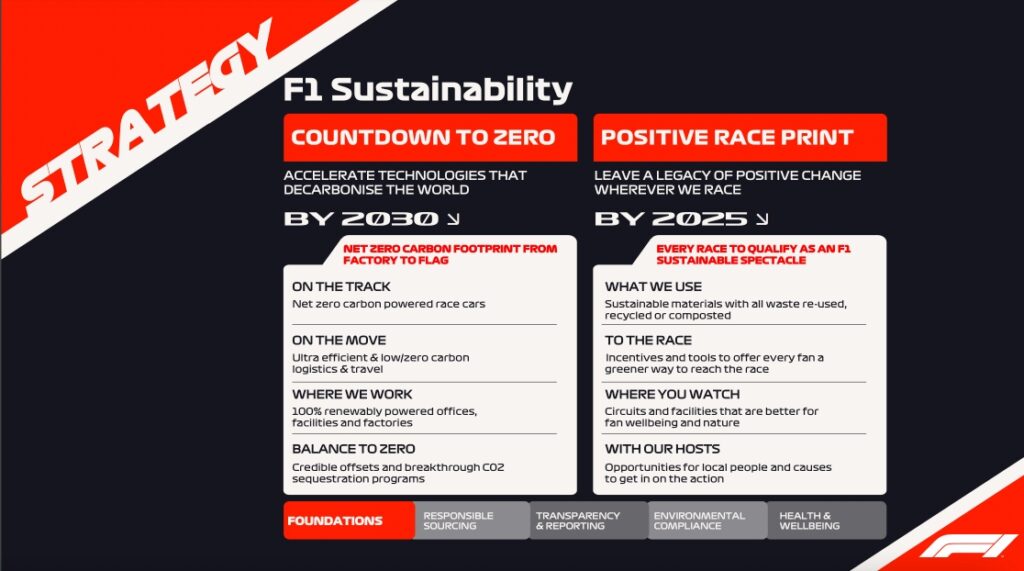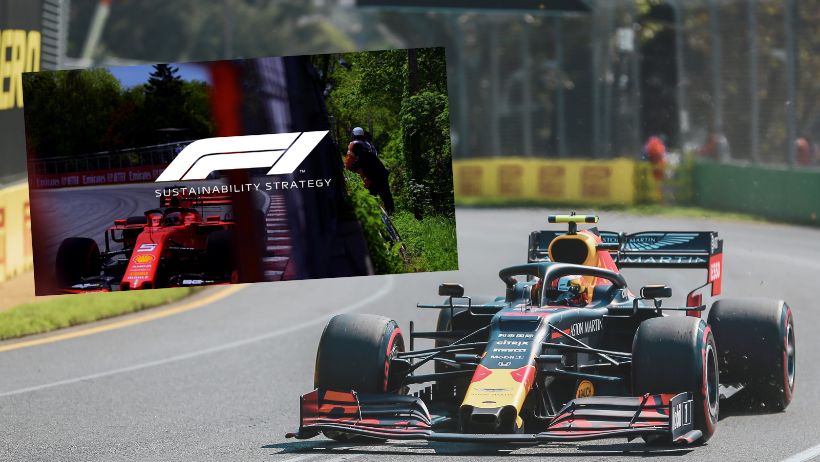November 2019 was a remarkable month in the history of Formula 1 for two reasons. Not only Lewis Hamilton wrapped up his sixth world title, but the pinnacle of motorsport had entered a brand-new chapter. A strategic decision saw Formula 1 and sustainability joining forces for the very first time. How is that possible, and what does it even mean? Lemme explain.
- Formula 1 launched its first ever sustainability strategy in November 2019
- In the 10-long page document F1 bosses declared that the sport will fight for a better tomorrow through both technological innovations and more down to earth ideas
- In this article you will find straightforward explanation on F1’s attempt to become “laboratory for environmentally beneficial innovations” and make “a significant positive impact on the environment and communities”
Personally, I found Formula 1’s decision surprising. “How on earth F1 could have anything to do with sustainability?”. That was my initial thought. However, back then I was starting to be more and more interested in the environmental-related topics. Therefore, I decided to dive in.
What ultimately fuelled my passion was a brief PDF document, which was (and still is) available for everybody. You can simply type in “Formula 1 sustainability strategy” in your Google search bar and voilà, the less obvious side of our beloved sport would be in front of you. But I will save you some time and present the most vital aspects in nutshell.
At the forefront is F1’s intention to become a net-zero sport until 2030. The big frame breaks down into more-detailed goals that have been separated into two categories – “Countdown to zero” & “Positive race print”. The former refers to technologies that decarbonise the world, whereas the latter is about ensuring sustainability of each venue where F1 races take place.
In Formula 1’s Sustainability Strategy two main groups of goals with four subcategories each have been outlined. The one that stands out – mainly due to its visibility to the fans – refers to having net-zero carbon powered race cars by 2030.

Formula 1 – laboratory for environmentally beneficial innovations
If the previous paragraph still leaves no clue whatsoever about F1’s decision to engage in sustainability, now it is a good time to evoke a couple of comments. This is what Chase Carey and Jean Todt, then Formula 1 and FIA bosses respectively, had to say on the matter.
“In launching F1’s first-ever sustainability strategy, we recognise the critical role that all organizations must play in tackling this global issue. By leveraging the immense talent, passion and drive for innovation held by all members of the F1 community, we hope to make a significant positive impact on the environment and communities in which we operate.”
“With the involvement of the teams, drivers, F1’s numerous stakeholders and crucially, the millions of fans around the world, FIA and Formula One are committed to driving development and ensuring motorsport grows as a laboratory for environmentally beneficial innovations.”
Formula 1 and sustainability – partnership in the interest of both the sport and the society
All being said, let me get this straight. F1 is a multibillion global business and as an entity of this kind nowadays it has to meet certain expectations. Tackling climate change is among them and frankly speaking, it might be one of if not the hardest to cope with in the history of the sport.
Therefore, adoption of Sustainability Strategy was anything but a surprise. F1 bosses had a decision to make. In the face of a burning need to ensure the long-term survival of the product in the form of Formula 1, they had to adjust it to the 21st century.
- Read also: WELCOME TO SUSTAINABLE PADDOCK 2.0, WHERE I INTRODUCED MYSELF AND MY IDEAS IN NUTSHELL
Putting it simply, racing in circles without taking any action and avoiding responsibility was no longer an option. Eventually, in November 2019, inaction was replaced by declaration of positively influencing environment, communities, and sport itself through set of goals brought up in the prior section of the article.
Since then, technological aspects turned out to be the most focal point of the whole strategy. Formula 1 made it clear in its commitment towards sustainability. However, the accusations of contradictions and inconsistencies are very much alive. But more on that in the future. For now on, all you need to know is that Formula 1 and sustainability is already a thing.
Enjoy more content from the Sustainable Paddock by visiting any of the undermentioned articles.
